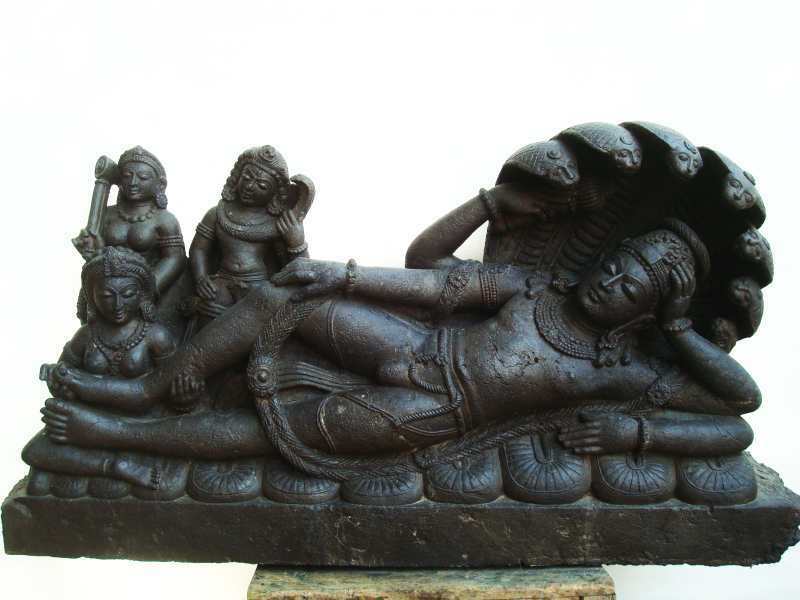-40%
A Truly Magnificent Cosmic Waves Sleeping Vishnu Pala Bihar Style Rare Statue
$ 5279.47
- Description
- Size Guide
Description
All of our antiques and arts for sale are a part of an exclusive private collection, acquired and collected with love across several decades.Every item has a story to tell so please feel free to reach out asking for it. We love and appreciate the fine arts and antiques and welcome anyone who feels the same way.
Up for sale is a truly magnificent work of art of Sleeping Vishnu, made in Pala Bihar Style.
Intricate and heavy statue would make a fine addition to any collection.
Feel free to contact me regarding any questions you may have.
Would be shipped via DHL.
Dimensions (Please note: Dimensions are approximate and may vary a bit):
Height : 47cm approx
Width : 84cm approx
The Pala Empire was an imperial power during the Late Classical period on the Indian subcontinent, which originated in the region of Bengal. It is named after its ruling dynasty, whose rulers bore names ending with the suffix of Pala, which meant "protector" in the ancient language of Prakrit. They were followers of the Mahayana and Tantric schools of Buddhism. The empire was founded with the election of Gopala as the emperor of Gauda in 750 CE.The Pala stronghold was located in Bengal and Bihar, which included the major cities of Vikrampura, Pataliputra, Gauda, Monghyr, Somapura, Ramvati (Varendra), Tamralipta and Jaggadala.
The Palas were astute diplomats and military conquerors. Their army was noted for its vast war elephant cavalry. Their navy performed both mercantile and defensive roles in the Bay of Bengal. The Palas were important promoters of classical Indian philosophy, literature, painting and sculpture. They built grand temples and monasteries, including the Somapura Mahavihara, and patronised the great universities of Nalanda and Vikramashila. The Proto-Bengali language developed under Pala rule. The empire enjoyed relations with the Srivijaya Empire, the Tibetan Empire and the Arab Abbasid Caliphate. Islam first appeared in Bengal during Pala rule, as a result of increased trade between Bengal and the Middle East. Abbasid coinage found in Pala archaeological sites, as well as records of Arab historians, point to flourishing mercantile and intellectual contacts. The House of Wisdom in Baghdad absorbed the mathematical and astronomical achievements of Indian civilisation during this period.



















